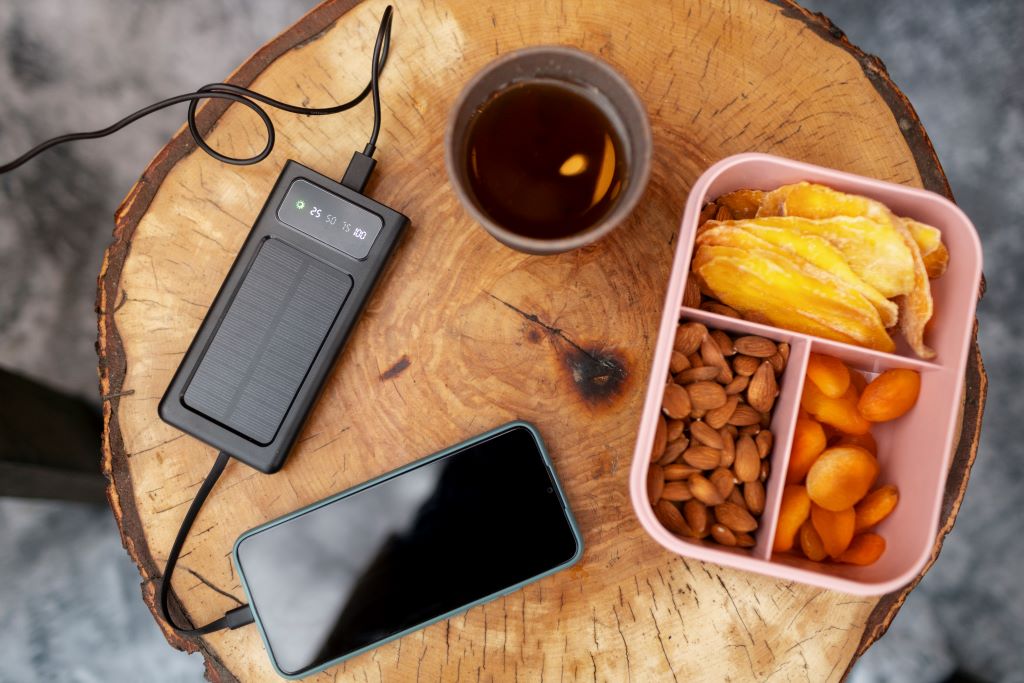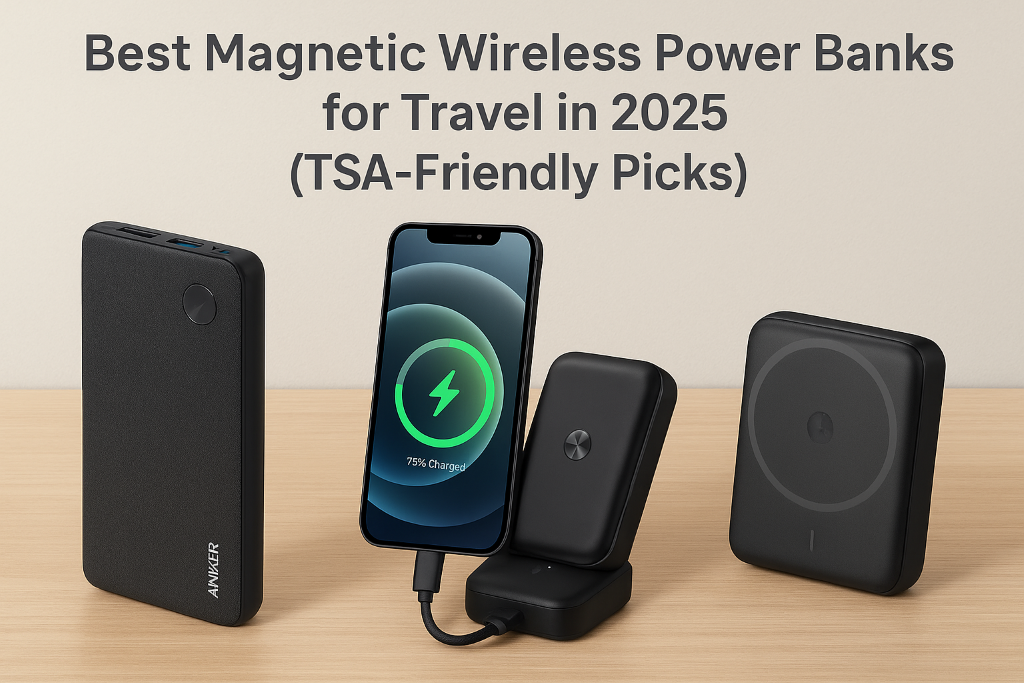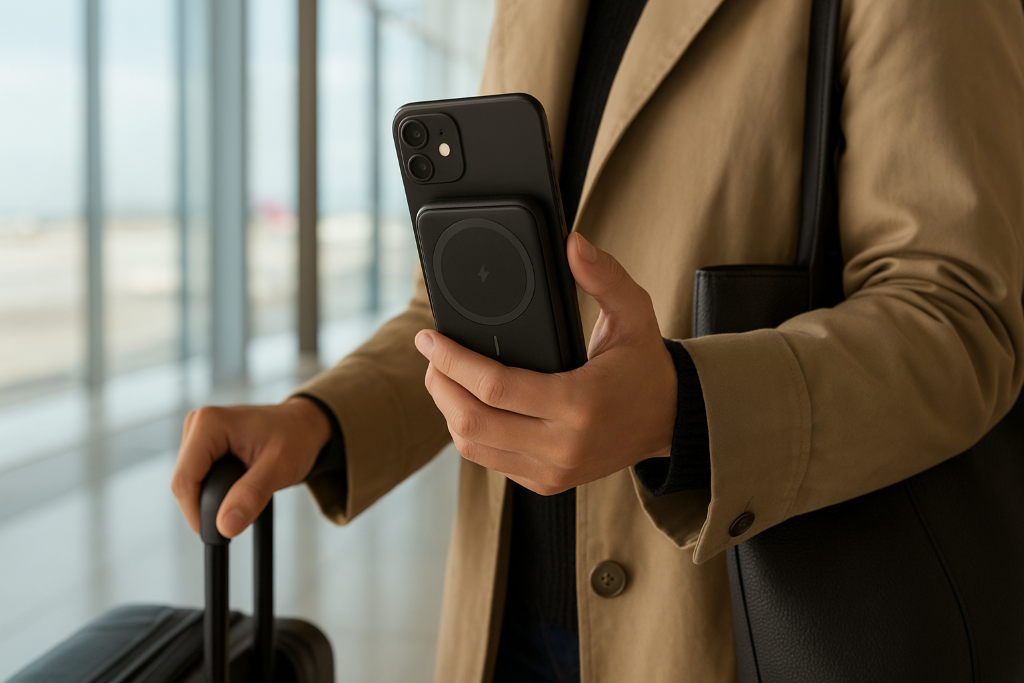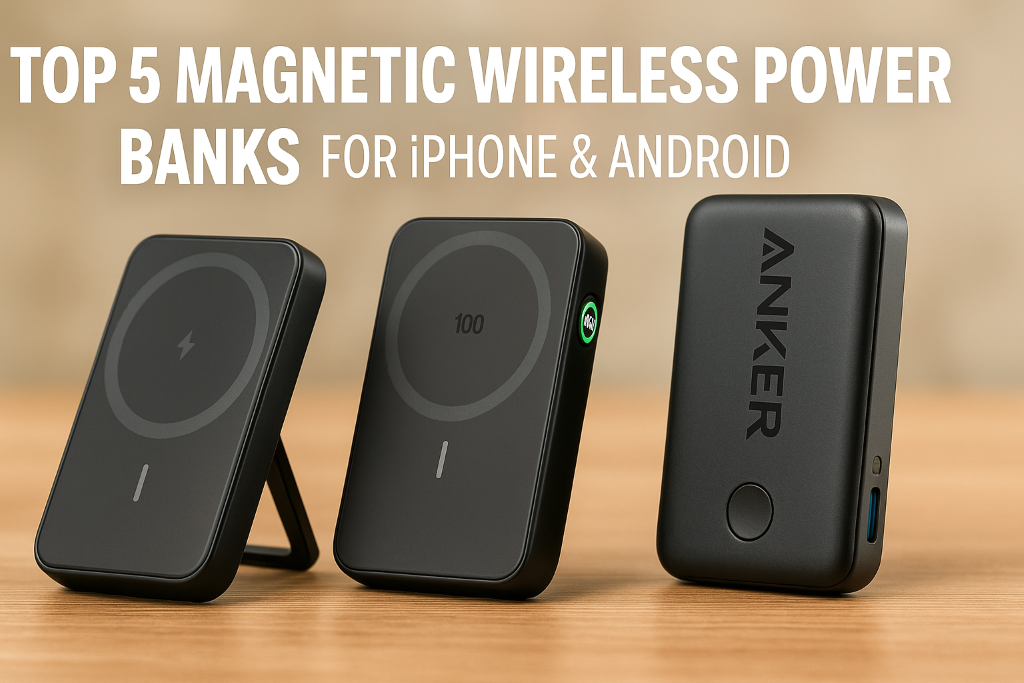The solar-powered phone chargers are the best camping partners in 2025. Whether you want to keep the smartphone alive for a map, provide power to the GPS, or charge the headlight, these chargers give you reliable energy directly from the sun. For campers who want to flee the city without losing electricity, they are a smart and environmentally friendly alternative.
That is where solar-powered phone chargers step into the spotlight. Unlike traditional power banks, they use sunlight energy to keep your devices alive. But the big question is: are they really worth it compared to regular chargers when you are camping in 2025?
Here in this guide, we will provide you with some of the features and a direct comparison so you will know which one is best for camping.
How Solar-Powered Phone Chargers Work?
A solar-powered phone charger has essentially a portable battery with built-in or detachable solar panels. These devices use solar energy by catching sunlight through the underlying panels, which then converts it into direct current (DC).
This electrical energy is later stored in the internal battery of the charger for use. When needed, you can connect to your smartphone, tablet, or other devices using USB-C, USB-A, or even wireless charging options available in new models.
The main advantage of this setup is the dependence on a renewable energy source – as long as sunlight, you can generate and store power. However, the overall performance of factors such as efficiency, battery capacity, and prevailing weather conditions is
Features to Look for in 2025 In Solar-Powered Chargers
If you want to buy a solar-powered phone charger in 2025, here are some of the features that matter most:
Battery Capacity (mAh):
If you are planning long trips, see 20,000 mAh or more. This ensures many complete fees for smartphones.
Quality of solar panels:
Monocrystalline panels with high efficiency (21-25%) are quickly charged in sunlight. The folding panels are a plus for the more surface area.
Waterproof and design:
Camping equipment will cope with rain, dust, and informal drops. IP65+ waterproofing is recommended.
Charging speed:
USB-C PD (Power Delivery) and Quick Charge 3.0 are now standard in 2025. Rapid charging means less waiting.
Portability:
Foldable, light design is easy to pack. Everything cuts for the backpacks so that they are charged as you increase
Additional features:
LED flashlight, wireless charging pads, or carabiner hooks can add function.
Solar-Powered Phone Chargers vs. Regular Electric Phone Chargers for Camping
Here is the a side-by-side comparison:
| Feature | Solar-Powered Charger | Regular Electric Charger (Power Bank) |
| Power Source | Sunlight + internal battery | Pre-charged from wall outlet |
| Reliability in Remote Areas | Unlimited (if sunlight) | Limited to the stored capacity |
| Charging Speed | Slower in cloudy weather | Constantly quickly. |
| Capacity | Varies, usually 20,000mAh+ | Wide range (10,000–40,000mAh) |
| Portability | Slightly bulkier (panels) | Slimmer, lighter |
| Best Use Case | Extended off-grid camping | Short trips, backup power |
| Eco-Friendliness | Renewable, sustainable | Relies on electricity |
Some pros and cons of Solar-powered chargers:
A solar-powered phone charger provides many benefits. It uses sunlight to produce energy, which gives you access to free power from a renewable source. This makes it easy for extended outdoor use, such as camps or tour journeys, where the electric outlet is difficult to find. It is also more environmentally friendly, as it depends on pure natural energy.
On the other hand, performance is very dependent on sunlight, so it does not work even on cloudy or rainy days. Solar chargers also has larger and bulkier than standard chargers due to the underlying panels, and they usually charge devices with slow speed.
Also read this: Best Solar Powered Desk Fans for Home & Office in 2025
Some pros and cons of Standard electric chargers:
Standard electric chargers or power banks also have benefits. They provide fast and reliable charging and are usually compact, light, and move around. Many versions come with large battery features, so you can charge your devices several times.
However, they have limitations. When the power bank is out of charge, it must be connected to an outlet to recharge, which can be challenging during long visits without access to electricity. Since they rely on traditional energy sources, they are not the most environmentally friendly choice in the long term.
Which Type is Better for Camping?
It depends on your camp style:
Weekend Travel (1-2 nights):
A high capacity bank (20,000 mAh) is more than sufficient. There is no need to worry about solar panels.
Camping on several days (3+ nights):
A solar-powered charger is more reliable because you can charge it daily with sunlight.
Hiking/backpacking:
Solar chargers that cut the back shaft are excellent, making you charge while moving.
Emergency preparation:
Solar-powered chargers are best in this case, too. Even if you forget to charge your power bank at home, the sun is always available.
Also read this: How Long Do Power Banks & Portable Chargers Last?
Conclusion:
Are solar-powered chargers a good alternative for the camp in 2025?
If you are just going out on a small weekend trip and need to charge the phone just once or twice, a regular power bank is probably more practical option. It is easy to rely on fast, more compact, and rapid fees. However, if you are planning an off-grid adventure for a long time or want to protect an Akson power source, a solar-powered phone charger is definitely a smart investment.
For many campers, the best way is to bring a solar-powered charger for faster and practical charging, as they use sunlight energy to charge their phones, tablets, or laptops.
FAQs About Solar-Powered Phone Chargers
Q1. Do solar-powered phone chargers work at night?
No, they don’t generate power without sunlight. However, they store energy in their internal batteries, which you can use at night.
Q2. Can solar chargers fully replace power banks?
Not entirely. They work best as a supplement to power banks, especially when camping off-grid.
Q3. How long does it take to charge a phone with solar?
Depending on sunlight and panel efficiency, it can take 3–6 hours for a full phone charge. Faster if you use high-efficiency panels.
Q4. Are solar chargers waterproof?
Many modern models in 2025 come with IP65 or higher waterproof ratings, making them suitable for outdoor use. Always check the specs before buying.
Q5. What’s the best solar charger for camping?
Look for 20,000mAh+ capacity, foldable high-efficiency panels, and USB-C PD charging support. Brands like Anker, Goal Zero, and BigBlue are popular choices.
Q6. Do solar chargers work on cloudy days?
Yes, but charging will be slower. High-efficiency panels still generate power in low light, but expect longer charging times. Pairing with a power bank ensures you always have backup power when sunlight is weak.





Leave a Reply